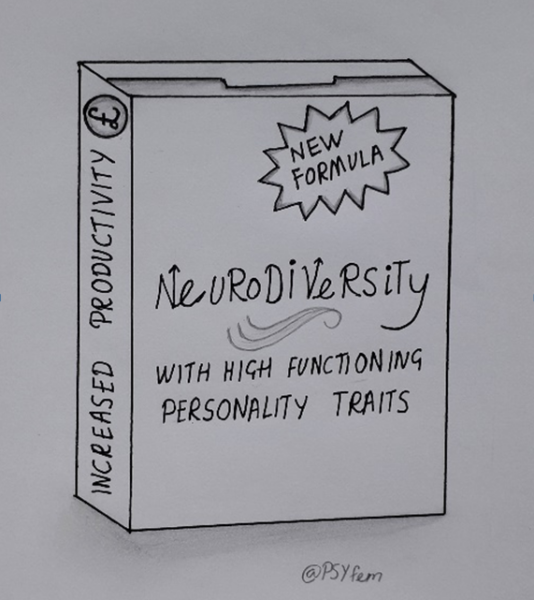Re-inventing the wheel?
| Paper | Authors |
|---|---|
| Critiques of the Neurodiversity Movement | Ginny Russell |
| Neurodiversity as Politics | Ari Ne’eman, Elizabeth Pellicano |
Historical Roots
The origin of the neurodiversity movement is thought to be rooted in the online autistic community building in the 1990s, thanks to the increasing access to the internet. Most of the prominent figures in the early years of the movement drew heavily from the broader community fighting for disability rights. Judy Singer for example, who is credited for having coined the term ‘neurodiversity’, defined it within the framework of disability justice. Jim Sinclair, whose commentary “Don’t Mourn For Us” is considered to be the rallying cry for reform in how autists are treated and who went on to form ANI, also was influenced by Deaf culture. In our discussion of the two papers, we spent some time thinking about how and why exactly has neurodiversity movement diverged from the larger disability rights movement considering their shared ideals and goals. Here I will discuss what we talked about in the group and some of my own reflections as I read more about this. The referred sources apart from the listed two are linked in the body of the text.
How are we diverging

If we use the same framework to label physical disabilities that is used for neurological variations, we would simply call it biodiversity : the fact of variation in biological specifics of human existence. We don’t do that because arguably, the purpose of having these labels is not primarily to be descriptive but to capture the relation people who fall under the label have with their surroundings, in this case, they are disabled by their environment. It is reasonable to wonder why make this choice to rally for the social cause of rights to services and so on using a descriptive or even functional labels that are neologisms (neurodivergent, neurodivergence, neurominority etc.) when there already exist established relational-functional labels (e.g. neurologically disabled). A potentially related offshoot of this approach to distancing neurological disabilities from physical disabilities in the mainstream understanding is the proliferation of misguided or sometimes even ill-intentioned ‘branding’ of ND people as gainful from a capitalist point of view. While the inspiration porn for physical disabilities takes the tone of “worthy despite their disability”, neurological disabilities can get marketed, especially in tech related fields, as “worthy because of their (dis)ability” where the dis- part gets bracketed off because worth and dysfunction are incompatible in a capitalist world. The authors of Neurodiversity as Politics warn against such divergence in terminologies for various reasons. I will discuss some here that came up in the reading discussion –
Why the divergence?
Let’s consider some less insidious reasons for this divergence first. Looking historically provides some potential explanation for the divergence. Neeman traces the roots of the separation of autism advocacy from advocacy for other intellectual and physical disabilities back to 1960s when Bettelheim’s ‘refrigerator mother’ theory as a causal explanation for autism got popular. He says:

“…it left the autism world with a very momentous and important split because it basically said to parents of autistic children, “The advocacy that you should be focusing on is very different from the advocacy that’s being focused on in (what was then called) the mental retardation community. It’s very different from the advocacy you should be focusing on in the community of people with physical disabilities – cerebral palsy or spina bifida or muscular dystrophy or what have you. You need to be focusing on advocacy around what causes autism because, at the moment, you’re considered what’s to blame.” (Ari Ne’eman, 2017)
So while broader disability activism was moving toward demands for support and services, autism activism mainly led by parents of autistic children was mobilizing to promote search for cause and cure. Autism advocacy therefore, had a bit of catch up to do so to speak, with the broader disability movement because it had been derailed by the parents cry for cause and cure which was inevitable following the earlier believed theories about parents (particularly mothers) being the cause of their children being autistic.
Next factor that I think probably plays a role in this separation is how different kinds of disabilities are attributed to the disabled individuals. This is relevant not just at the level of PD vs ND but more broadly at the level of apparent vs non-apparent disabilities and in non-apparent I am including mental health disabilities. The behavioral challenges associated with non-apparent disabilities are more likely to be attributed to an individual as their fault compared to an apparent disability. This means that people with non-apparent disabilities which often include many neurological disabilities, experience the trauma of having to defend themselves from various personal attacks such as laziness, attention-seeking etc. in order to be considered seriously for accommodations. It is not hard to imagine why this divergence in experience might require the community to build vocabulary to speak of this experience.
While these are valid reasons for having distinct sets of labels to capture concepts that are maybe not represented in the broader disability rights movement, it is pointed out in this paper that relying on completely different sets of terminology might send the message that the ND movement does not identify itself with the disability rights movement. This is harmful because (a) it might imply that ND proponents do not see neurodivergence as disability; (b) at political/cultural level, such a separation would negatively impact the progress we could make fighting for support and services. I am not done reflecting on this, but I am tired for now. TBC…
Leave a comment